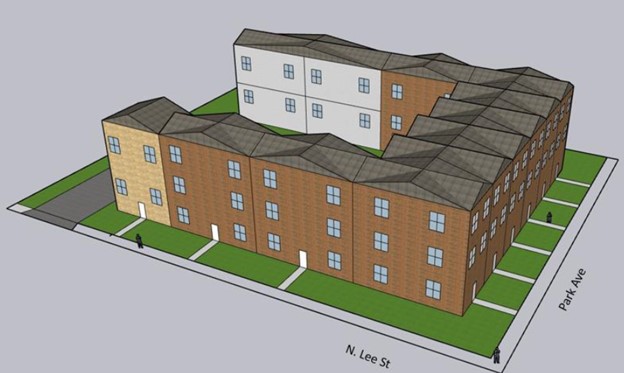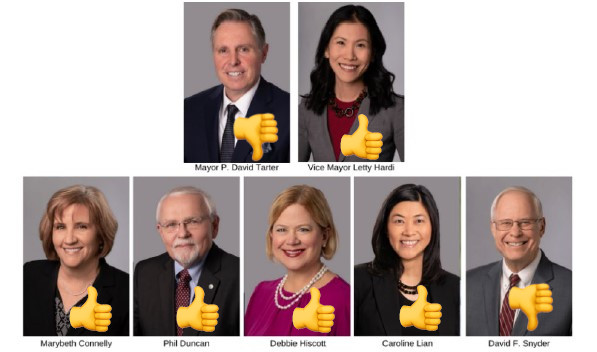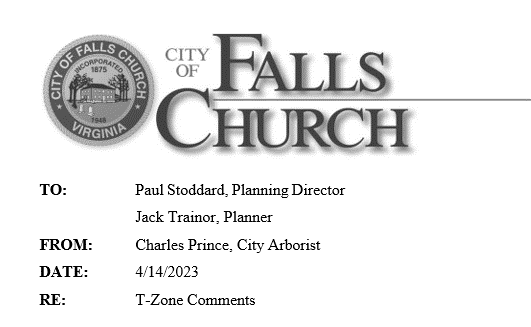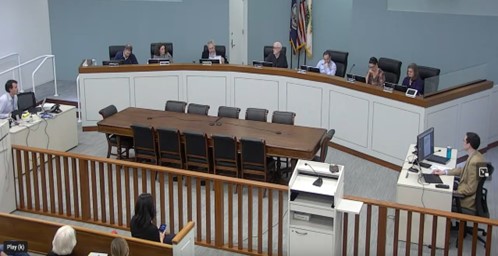Developers’ Letters On T-Zone
The City planning staff received comments from four developers ahead of the February 15 Planning Commission meeting to determine the Commission’s recommendations to the City Council on the T-Zone proposal.
They focus on greater lot coverages and narrower setbacks, though made no comment on height limits.
Below are excerpts from their letters. Also, included are excerpts from the Falls Church Chamber of Commerce. The letters may be viewed in their entirety at here.
“Maximum lot coverage: 60% is a deal killer. Can’t do much if anything at that level. 70% is minimum, 75% allows more flexibility and likely better projects.
Rear setback 20’: This would bean [sic]absolute deal killer as well, especially on corner lots. Highly unlikely that anything could be built that would be financially viable.
10’ setback on all street frontages >40’ is ok but should make provision for waiving that requirement if frontage faces institutional or commercial uses”
–Robert Young, OakPark LLC and Young Group , February 14, 2023
Fall church City Economic Development Authority Chairman
Developed Broadway, PNC and Post Office buildings, many developments in Falls Church City
“There are a few specific provisions and requirements within the ordinance, such as a 60% maximum lot coverage, 20 foot rear setback, and front setbacks that could be unduly restrictive to accomplishing this vision. I would respectfully request that these be given reconsideration and perhaps revised to ones that are more compatible with the urban context of the City.
…
I believe the current proposal for transitional zoning changes will permit and encourage similarly creative and forward thinking projects, especially given the enormous housing shortages in the region. Development is often met by resistance from those that like things the way they are, with little or no change. Sometimes even by residents of projects that would not have been permitted without previous changes to the zoning ordinance. However, in the end, change is inevitable, and the real challenge – and opportunity – is to guide and direct it in a direction that is positive and consistent with a future vision for the City.”
— Edward Novak, President of Nova Ventures, February 15, 2023
Mr. Novak’s company developed Kensington, the Byron and the Broadway mixed use buildings
“There are many good things and practical guidelines that I can agree with. These include the impervious surface restriction at 80%, the no parking in front yard setbacks, and the limitation of one parking space per unit.
…
The minimum [sic] lot coverage is much too low at 60% and will not allow the City to achieve its aim of significantly increasing the mix of housing types. I would strongly suggest that 75% lot coverage will allow developers more flexibility in both commercial and residential development. If 75% is not achievable under the ordinance, I would suggest 70% as a minimum [sic] for a lot coverage ratio. Similarly, the rear setback of 20 feet is not sustainable in this near urban setting. Think especially how difficult this would be on a corner lot. Again, dealing with setbacks, the ten-foot setback on all street frontages where the lot is greater than 40 feet is okay, but there should be some provision for waiving that requirement if the frontage faces an institutional or commercial use.”
–Russell Marks, Mintbrook Developers LLC, February 15, 2023
“While the Planning Commission recommended adjustment from 80% to 60% for building lot coverage will accommodate an urban townhouse style of development, it would not permit a viable multi-family development program, particularly on smaller parcels…
Impervious Surface Limit: … We recommend that this limitation not go below 90%
…we have always designed townhouses with 2 car garages to meet the demands of the marketplace.”
–Russell Rosenberger, President of Madison Homes, February 15, 2023
Builder of Madison Townhouses adjacent to the Spectrum Offices on Park Ave.
“The proposed maximum lot coverage of 60 percent, while an increase over existing regulations, remains too restrictive, making it hard to build new housing, driving up rents and prices, and chilling opportunities for financially viable compatible-scale redevelopment in accordance with the City’s planning documents. Flexibility is needed, and we would propose a higher percentage, such as 80 percent.
…
Rear Setbacks: …we fear this will have a similar effect on stymying redevelopment. We would propose a 10-foot setback along all street frontages. If the referenced 20- and 40-foot setbacks are retained, we would suggest including a provision allowing a modification of this requirement if adjacent to commercial or institutional uses.
…We support the a [sic] tree canopy or shade tree requirement of 15 percent.
…We support an impervious surface limitation of 80 percent.”
–Elise Neil Bengtson, Executive Director, Falls Church Chamber of Commerce, February 15, 2023







